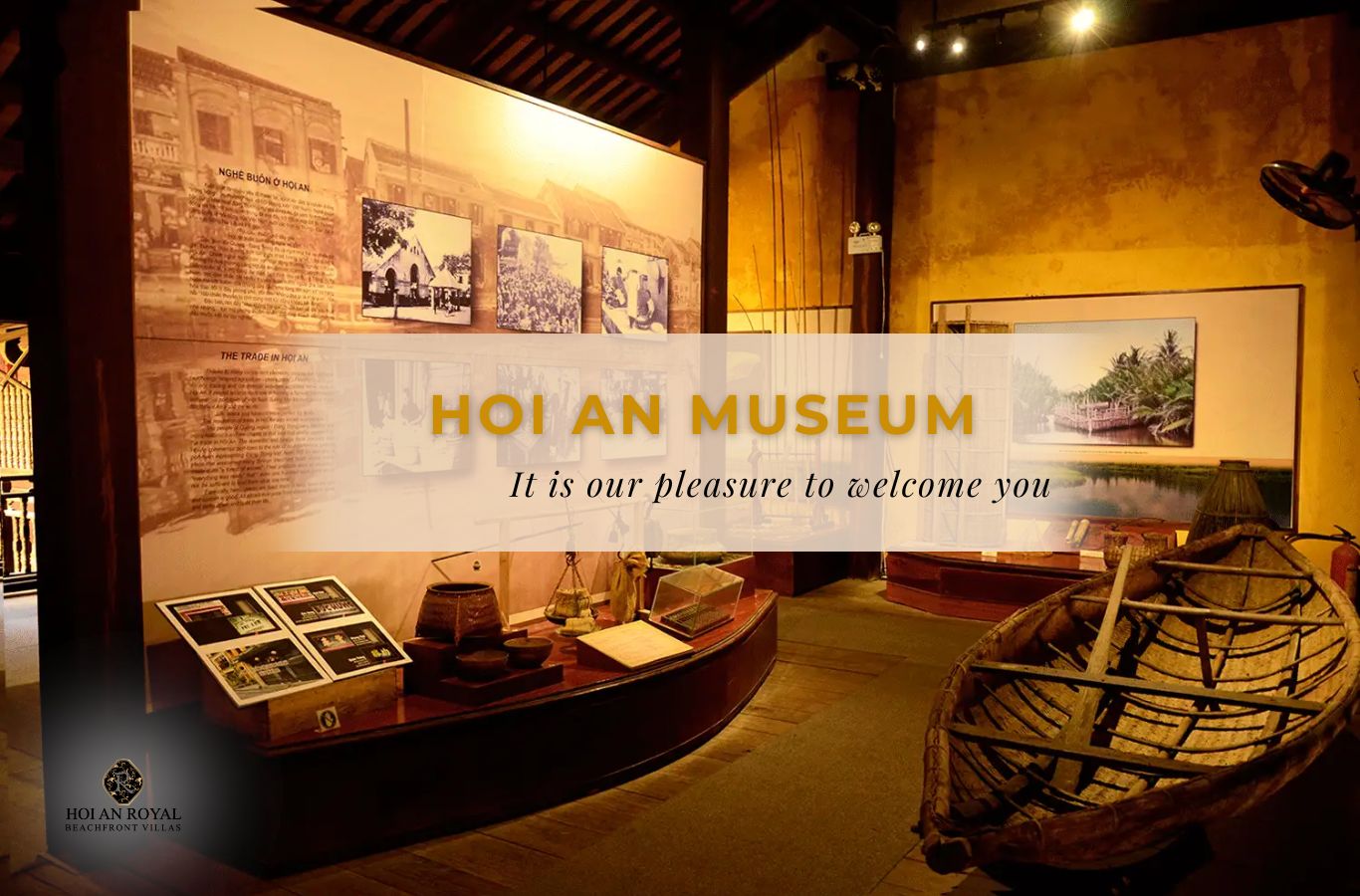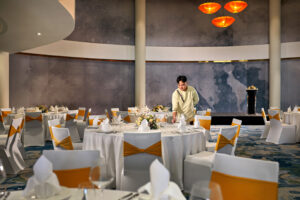More than just a travel destination, each Hoi An museum offers a unique slice of history, allowing visitors to fully experience the soul of the ancient town through every artifact and every quiet room. If you enjoy journeys with depth, don’t miss the list of museums introduced in the article below by Hoi An Royal Beachfront Villas.
Table of Contents
ToggleWhy should you spend time visiting Hoi An museums?
If you’re looking to dive deep into Hoi An’s history and culture, exploring the local museums is a must. They offer a structured and enriching way to understand the city’s rich heritage—here’s why it’s worth your time.
- Preservation of valuable artifacts and documents from ancient to modern times: the museums display hundreds of original artifacts and historical records that comprehensively reflect the formation and development of Hoi An. Thanks to this, you will gain a deep and structured understanding of this heritage land.
- Recreation of the lifestyle and customs of ancient Hoi An residents: through household items, traditional costumes, worship objects, and documentary images, the museums vividly illustrate the culture, beliefs, and daily rhythms of the people over centuries.
- Exhibition of themed displays with historical and social depth: the museums house many specialized galleries such as the revolutionary tradition room, the post-1975 reconstruction area, and the folk art gallery. Each area offers a vivid and emotional slice of history.
- Helps you truly understand the value of heritage beyond its appearance: unlike just walking through the old town, visiting the museums lets you access the underlying stories and understand why Hoi An was recognized by UNESCO as a world cultural heritage site.
- Additionally, specialized museums such as the hoi an trade ceramics museum allow you to discover unique ceramic artifacts that testify to the prosperous era of the Hoi An trading port and its cultural exchanges with countries like Japan.
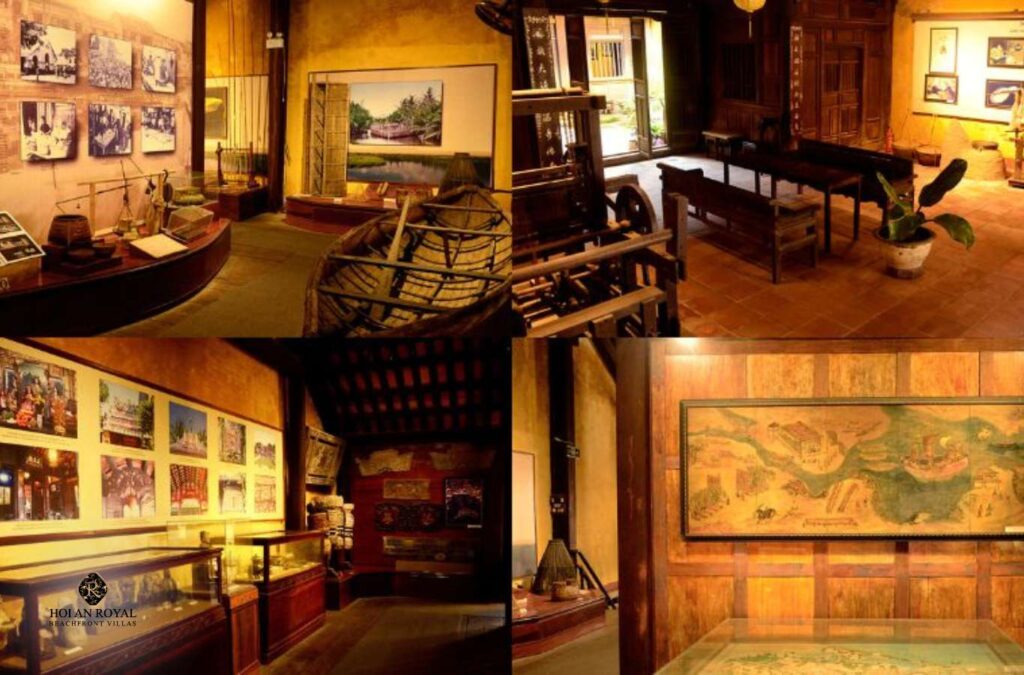
8 Famous museums in Hoi An you shouldn’t miss
Hoi An Museum (Hoi An Museum of History and Culture)
- Address: 10B Tran Hung Dao, Son Phong Ward, Hoi An
- Opening hours: 7:00 AM – 5:00 PM daily
Located in the ancient town, Hoi An Museum is an ideal destination to explore the history of this land through more than 200 artifacts and documents preserved from early times to the modern era.
The museum space consists of 6 exhibition areas, designed to resemble Hoi An’s ancient houses. Each room has its own theme, reflecting various aspects of local culture, architecture, life, and people.
A highlight is the room “Hoi An rising from hardship” with over 100 artifacts recreating the post-1975 period – a time when Hoi An’s people rebuilt their homeland, showcasing the community’s resilience and solidarity.
The top floor is the art gallery, featuring many works using oil paint, graphite, powder color… expressing the beauty of Hoi An through emotional and creative artistic perspectives.
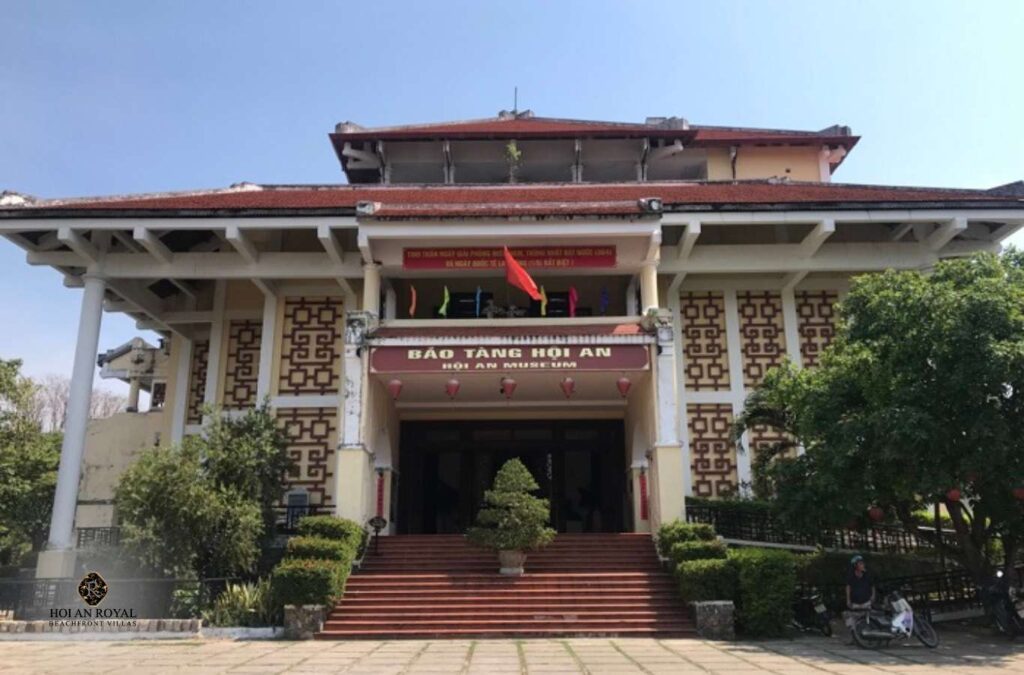
Hoi An Trade Ceramics Museum
- Address: 80 Tran Phu Street, Hoi An City, Quang Nam Province
- Opening hours: 7:00 AM – 9:00 PM (closed on the 15th of each month)
Housed in an ancient building built in 1920, the Trade Ceramics Museum recreates the bustling port era of Hoi An through hundreds of valuable ceramic artifacts from many countries.
The museum’s architecture includes two floors, three compartments (front house – rear house – connecting house), and a central sky well, reflecting the traditional design of Hoi An’s old houses, creating a warm and familiar atmosphere for visitors.
The displayed artifacts demonstrate the deep cultural exchanges between Hoi An and civilizations like Japan, China, and Southeast Asia. Ceramics were not only trade items but also witnesses to the era of international integration.
This is a must-visit for those who love ceramic art and want to learn about the crafting techniques and trade journey of Hoi An through historical layers.
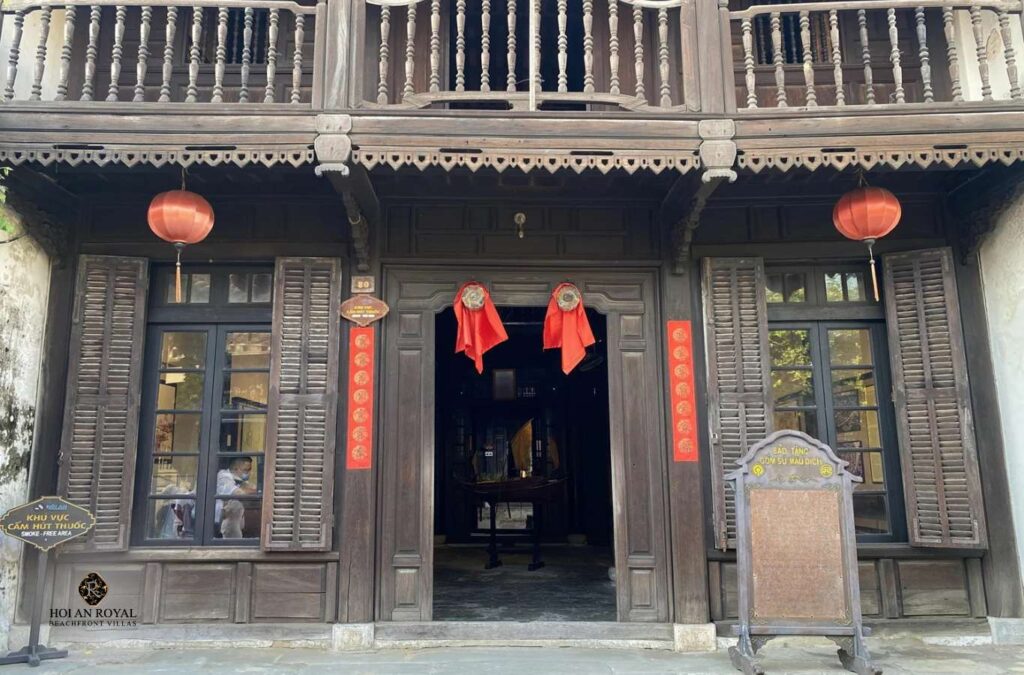
Hoi An Museum of Sa Huynh Culture
- Address: 149 Tran Phu Street, Minh An Ward, Hoi An City, Quang Nam Province
- Opening hours: 7:00 AM – 9:00 PM daily, except on the 10th of each month
Established in 1994, the Museum of Sa Huynh Culture preserves nearly 1,000 artifacts dating back over 2,000 years, reflecting the life of the ancient Sa Huynh people – a representative pre-Champa culture once thriving in Central Vietnam.
The artifacts were excavated from various sites such as Hau Xa, An Bang, Thanh Chiem, and Bai Ong (Cu Lao Cham)… including jewelry, ceramics, and tools, showcasing beliefs, daily life, and aesthetics of the ancient era.
A distinctive feature is that each item comes with documents and excavation images for easy understanding of the historical context and cultural value behind each relic.
Besides exhibition, the museum also serves as a research and educational center for Sa Huynh culture, clarifying the connection between ancient inhabitants and major cultures like South India, China, and Southeast Asia.
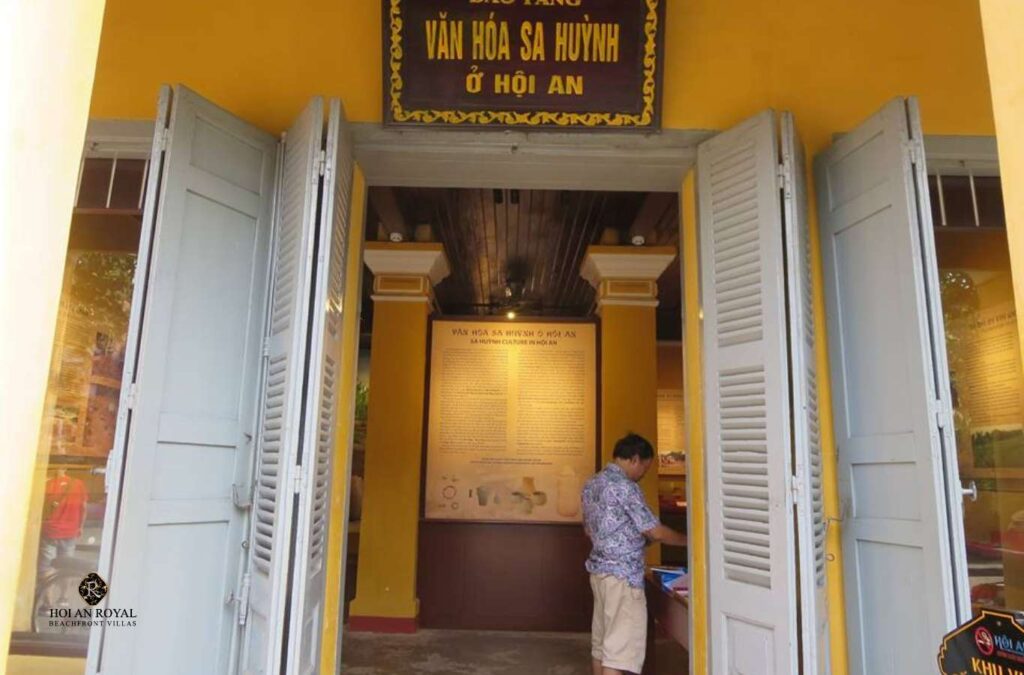
Hoi An Museum of Folk Culture
- Address: 33 Nguyen Thai Hoc, Minh An Ward, Hoi An
- Opening hours: 7:00 AM – 9:00 PM daily
- Note: Closed on the 13th and 28th of each month for professional work
Located in a two-story ancient house measuring 57m long and 9m wide, the Museum of Folk Culture vividly recreates the traditional cultural life of Hoi An residents throughout historical periods.
The museum owns 483 artifacts displayed under four main themes: folk visual arts, performing arts, traditional crafts, and folk life – each group of artifacts tells a lively cultural story.
You will encounter worship statues, horizontal lacquered boards, exquisite reliefs; re-enactments of folk rituals such as unicorn dancing, ba trao singing, bai choi singing – intangible cultural values typical of Vietnam’s central coastal region.
More than just an exhibition space, the museum also organizes folk culture performances, contributing to the preservation and promotion of Hoi An’s distinctive communal life past and present.
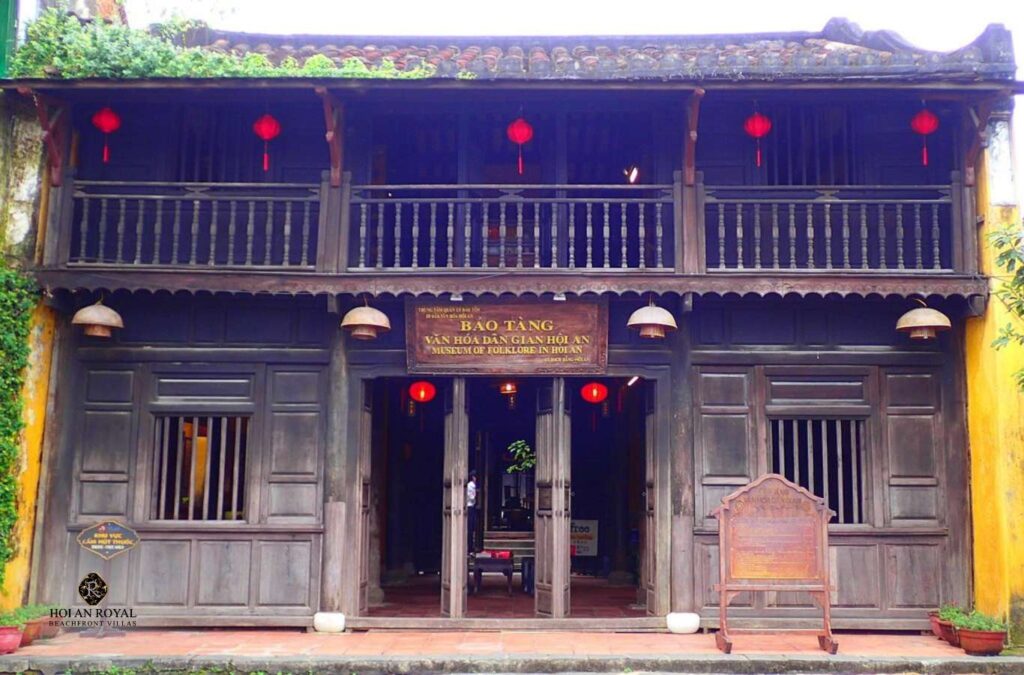
Museum of Traditional Medicine
- Address: 46 Nguyen Thai Hoc, Hoi An City, Quang Nam
- Opening hours: 7:00 AM – 9:00 PM daily (closed on the 12th and 27th of each month)
The Museum of Traditional Medicine has been open since 2019 to honor an ancient profession that flourished when Hoi An was the vibrant Faifo trading port in the 16th–17th centuries.
Located in an old house, the museum features six display areas with nearly 200 artifacts, including medicine cabinets, rare medicinal herbs, prescription tools, and ancient documents related to Eastern medicine, especially Quang Nam – Hoi An traditional medicine.
Each space fully recreates a traditional herbal medicine shop with areas for pulse diagnosis, medicine preparation, drying, and storage. Familiar medicinal herbs like mugwort, licorice, polyscias fruticosa, and gynostemma are also clearly introduced.
In addition to objects, the museum exhibits valuable documents about renowned physicians, reflecting the role of traditional medicine in community life and local culture over the centuries.
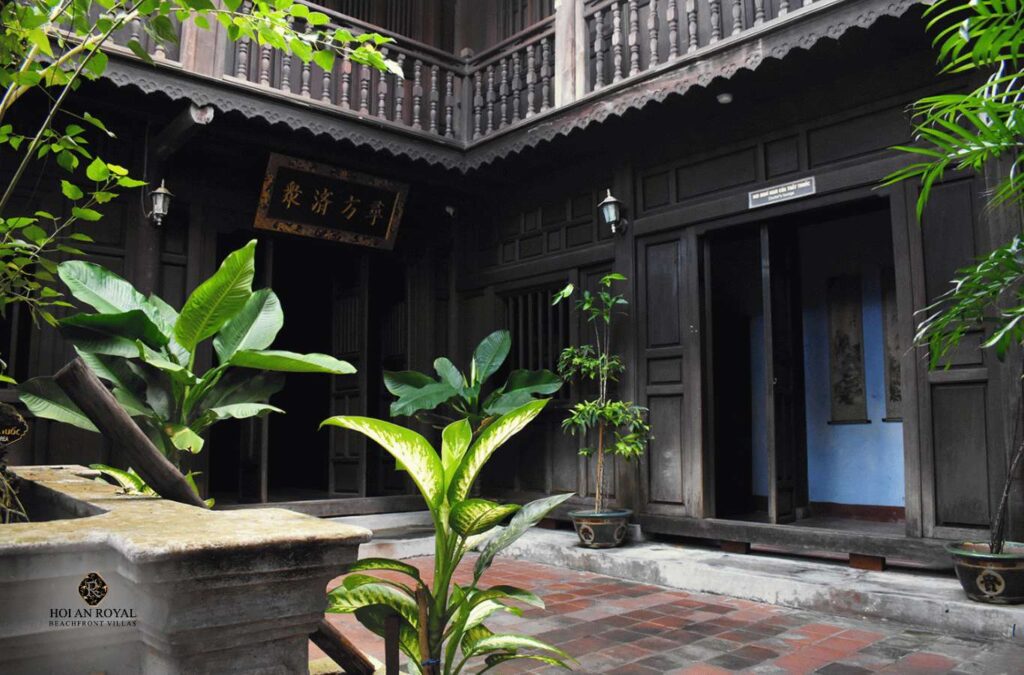
Hoi An Silk Museum
- Address: 28 Nguyen Tat Thanh, Cam Pho Ward, Hoi An City, Quang Nam Province, about 1 km from the center of the ancient town
- Opening hours: 8:00 AM – 9:00 PM daily
Located within Hoi An Silk Village, the Silk Museum is considered a “living museum” that fully recreates the traditional silk weaving space in a two-story ruong house with yin-yang roof tiles and delicate wooden carvings.
Here, visitors can experience the full silk-making process: from silkworm breeding and cocoon boiling to thread spinning, fabric weaving, and dyeing. Each step is directly performed by artisans, offering a vivid, authentic, and emotional experience.
Beyond the craft aspect, the museum also connects with history by introducing the role of Hoi An silk in the “maritime silk road” during the 17th century – the golden age of the Faifo trading port.
Visitors can explore freely or choose guided tours (45 minutes or 4 hours), with the longer tour including a hands-on silk weaving activity with artisans – an engaging and interactive experience.
Besides the museum, the Silk Village also includes services like restaurants, hotels, spas, and resorts, offering guests a chance to explore and relax in a refined traditional setting.
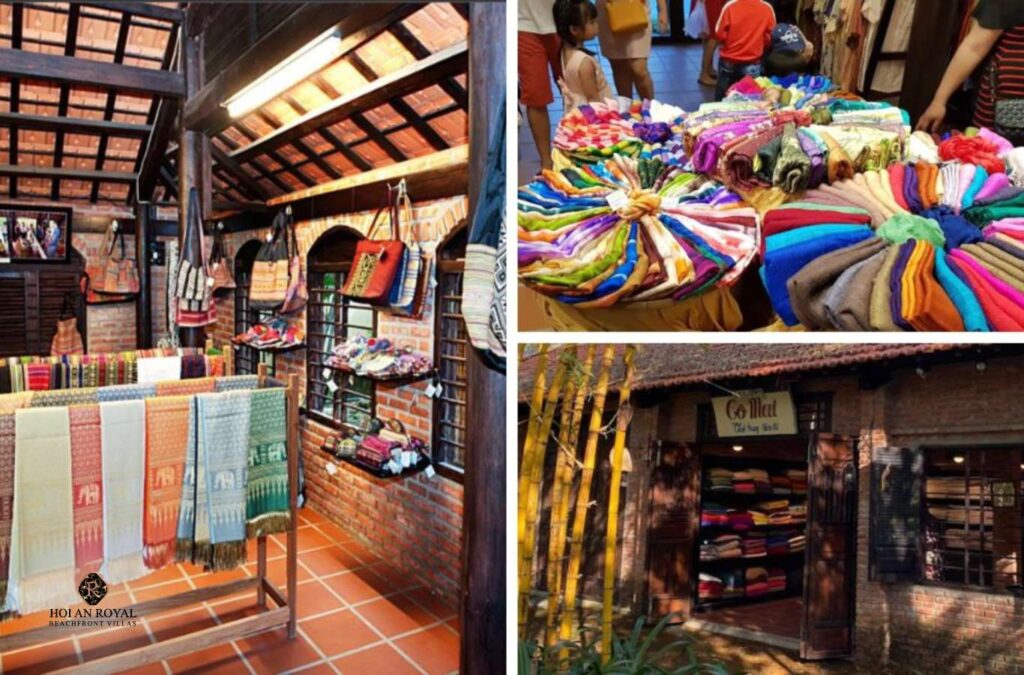
Hoi An Gemstone Museum
- Address: 130 Nguyen Thai Hoc, Minh An Ward, Hoi An City, Quang Nam Province
- Opening hours: 08:00 – 16:30 (closed on weekends)
- Established: In 2013, founded by veteran gemstone collector Duong Ba Dung
This is home to the largest natural gemstone collection in Vietnam, with over 600 rare rough stone specimens from various regions such as Yen Bai, Kon Tum, Da Lat, Phu Quoc… creating a vibrant and dynamic space.
In addition to raw stones, the museum also displays 400 intricately carved gemstone statues, including the “Skull” sculpture which symbolizes the profound philosophy of life and death. Many works reflect Vietnamese culture through both traditional and contemporary themes.
Another highlight is the tektite meteorite relief depicting the map of Vietnam – a combination of nature and art, unique and rich in cultural and national meaning.
The modern exhibition space is integrated with a jewelry shopping area designed by Duong Nga, along with a café and restaurant that make the visit complete and pleasant.
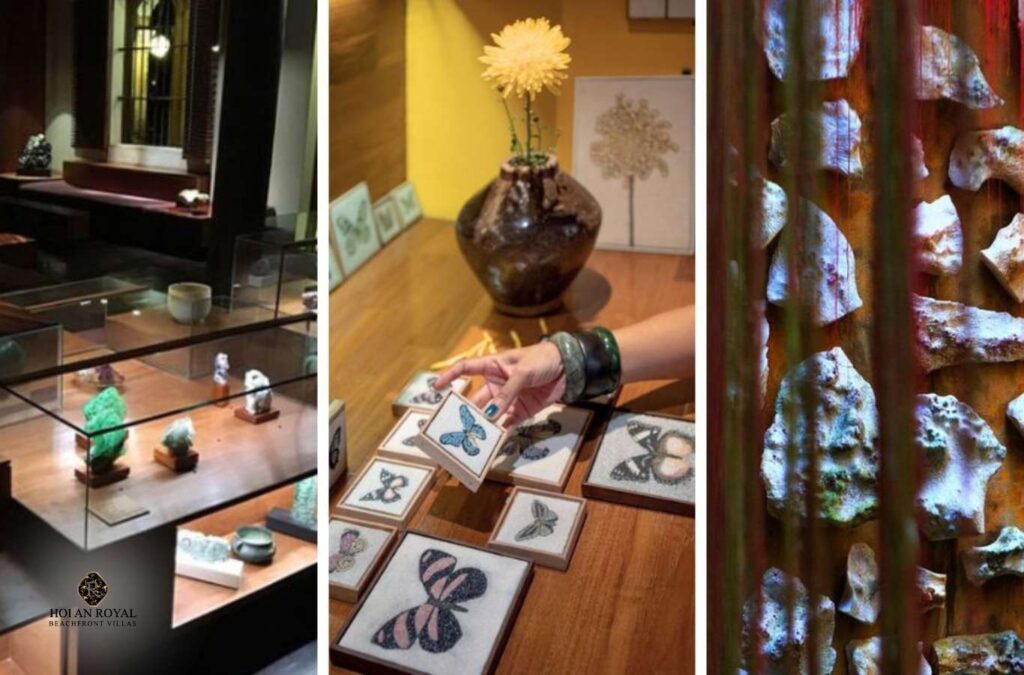
Precious Heritage Art Gallery Museum
- Address: 26 Phan Boi Chau, Hoi An City, Quang Nam Province
- Opening hours: 9:00 – 17:00 daily
Founded by French photographer Réhahn in 2017, the museum is dedicated to honoring the culture of Vietnam’s 54 ethnic groups. Located in a two-story ancient house with strong Hoi An character, the space blends traditional beauty with contemporary artistic spirit.
More than 500 artworks are exhibited at the museum, from paintings, sculptures, ceramics to cultural artifacts closely linked to community life. Each piece tells a story about people and the cultural identity of Vietnam.
The space is scientifically arranged, creating a seamless emotional flow and allowing visitors to fully appreciate the intangible values the museum aims to preserve and spread.
Especially, visitors can join workshops, interactive activities, or regular cultural programs here – where art inspires and connects generations.
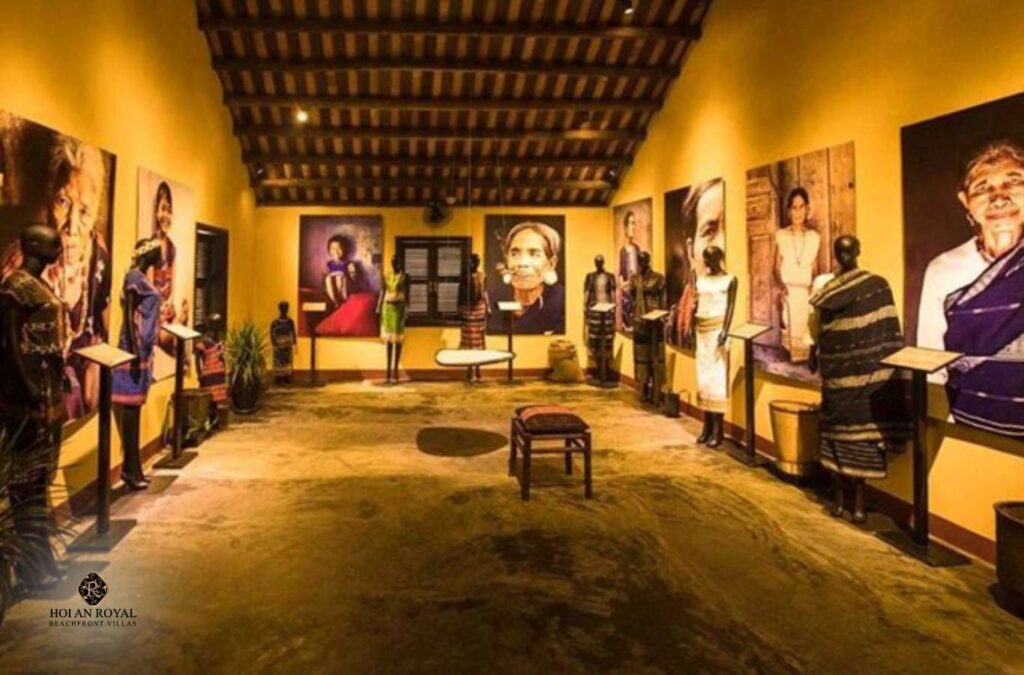
Ticket information and how to visit museums in Hoi An
To help with your visit planning, you can refer to the summary table of ticket prices for prominent museums in Hoi An below, including both individual tickets and ancient town combo tickets:
| No. | Museum name | Vietnamese visitors | International visitors | Children (1m–1.4m) | Children under 1m / under 12 years old | Notes |
| 1 | Hoi An Museum | 80,000 VND | 120,000 VND | 50,000 VND | Free | Individual ticket |
| 2 | Hoi An Trade Ceramics Museum | Included in combo | Included in combo | Included in combo | Included in combo | Must present combo ticket |
| 3 | Hoi An Museum of Sa Huynh Culture | 80,000 VND | 150,000 VND | 50,000 VND | Free | Individual ticket |
| 4 | Hoi An Museum of Folk Culture | Included in combo | Included in combo | Included in combo | Included in combo | Included in ancient town combo ticket |
| 5 | Museum of Traditional Medicine | Included in combo | Included in combo | 50,000 VND | Free | Included in ancient town combo ticket |
| 6 | Hoi An Silk Museum | 50,000 VND | 50,000 VND | 50,000 VND | Free | Individual ticket |
| 7 | Hoi An Gemstone Museum | 80,000 – 120,000 VND | 80,000 – 120,000 VND | 80,000 – 120,000 VND | 80,000 – 120,000 VND | Individual ticket |
| 8 | Precious Heritage Art Gallery Museum | 100,000 VND | 100,000 VND | Free (under 12 years old) | Individual ticket |
Most museums located in Hoi An ancient town such as Hoi An Museum (History and Culture), Hoi An Trade Ceramics Museum, Hoi An Museum of Sa Huynh Culture, and Hoi An Museum of Folk Culture are included in the ancient town entrance ticket system. This combo ticket is popular and convenient, especially if you plan to visit several sites in one day.
The ancient town combo ticket currently costs 80,000 VND for Vietnamese visitors and 120,000 VND for international visitors. With this ticket, you can choose to visit 3 out of 21 sites including old houses, assembly halls, museums, and monuments within the ancient town. The ticket is valid for 24 hours from the time of purchase.
Some specialized museums such as Hoi An Silk Museum, Gemstone Museum, and Precious Heritage Art Gallery Museum are not included in the combo and require separate tickets purchased at the entrance. Hoi An Museum and Hoi An Museum of Sa Huynh Culture, although located within the ancient town, also require separate tickets.
Additionally, Hoi An applies several preferential policies for specific groups:
| Group | Discount / Support |
| Seniors, students, people of merit | 50% discount (applies to 2 people per ticket) |
| Groups of 8 tickets or more | Free tour guide support |
| Groups of 15 tickets or more | 1 free ticket |
Regarding transportation, you can easily walk or rent a bicycle to explore the ancient town area as the museums are located close to each other. If traveling from the city center or visiting sites outside the old town such as the Silk Village, taxis or electric vehicles are convenient and reasonable options.
Important notes when visiting museums in Hoi An
When visiting museums in Hoi An, keep the following points in mind to ensure a good experience and help preserve heritage values:
- Do not touch displayed artifacts: All museum artifacts have significant historical and cultural value. Direct contact may cause damage or shorten their lifespan.
- Only take photos in permitted areas: Some museums restrict photography in certain zones to protect artifacts from strong light. Look for signage or ask staff before taking pictures.
- Maintain silence during your visit: Avoid making noise to preserve a quiet space, allowing everyone to fully experience and appreciate the exhibits.
- Keep the environment clean: Do not litter; dispose of trash in designated bins to help maintain the cleanliness and environment inside the museum.
- Dress appropriately and respectfully: Avoid overly short, revealing, or inappropriate clothing. Neat and proper attire shows respect for the cultural space.
- Absolutely no smoking inside museums: Smoke can affect the artifacts and overall environment, so this regulation must be strictly followed.
- Follow each museum’s specific rules: Each location may have unique regulations such as walkways, restricted zones, opening and closing hours… read the guidelines carefully and comply to avoid inconvenience.
- Compensate for any damage caused to artifacts: In the event of damaging museum property or displayed items, visitors will be required to compensate as per regulations. Be careful and respectful of the heritage.
- Choose a suitable time to visit: Morning or late afternoon is ideal to avoid harsh sunlight and crowds. These times also allow better observation, photography, and overall enjoyment of the museum atmosphere.
Additionally, visiting in the morning or during cool afternoons helps avoid heat and crowds, while offering a peaceful space for easier viewing and photography.
Don’t let Hoi An be just another check-in spot. Make your trip more meaningful by exploring the Hoi An museums , then return to relax in luxury at Hoi An Royal Beachfront Villas – a place where you can fully embrace the ancient yet elegant charm of the town.
